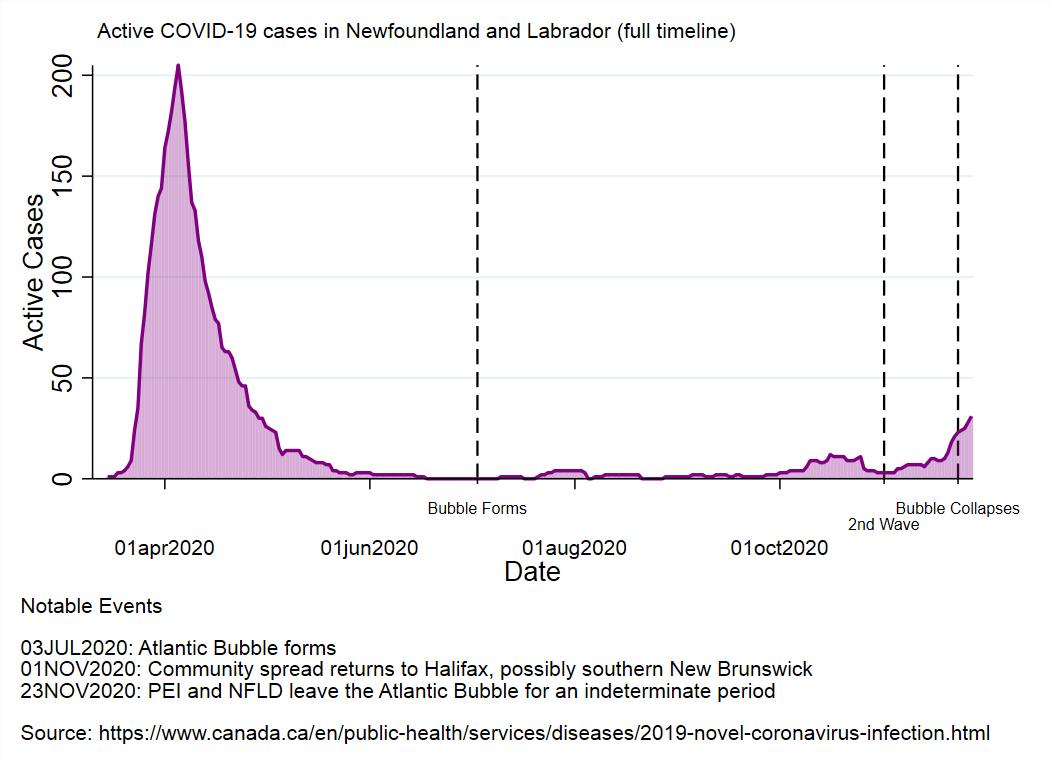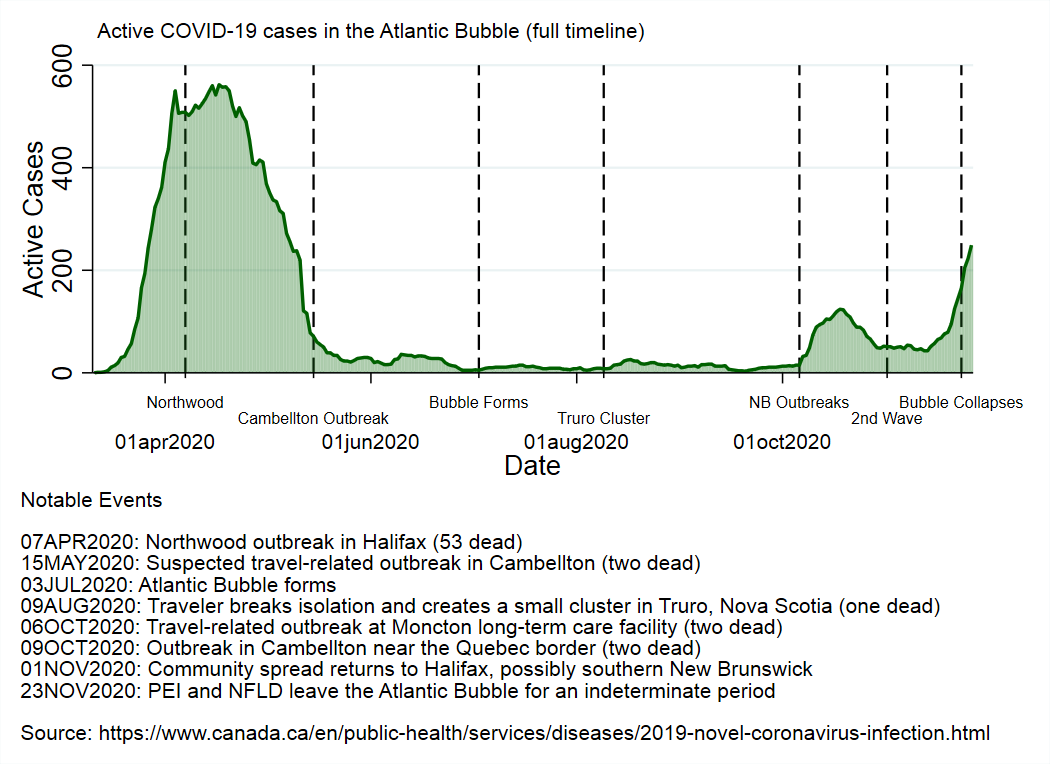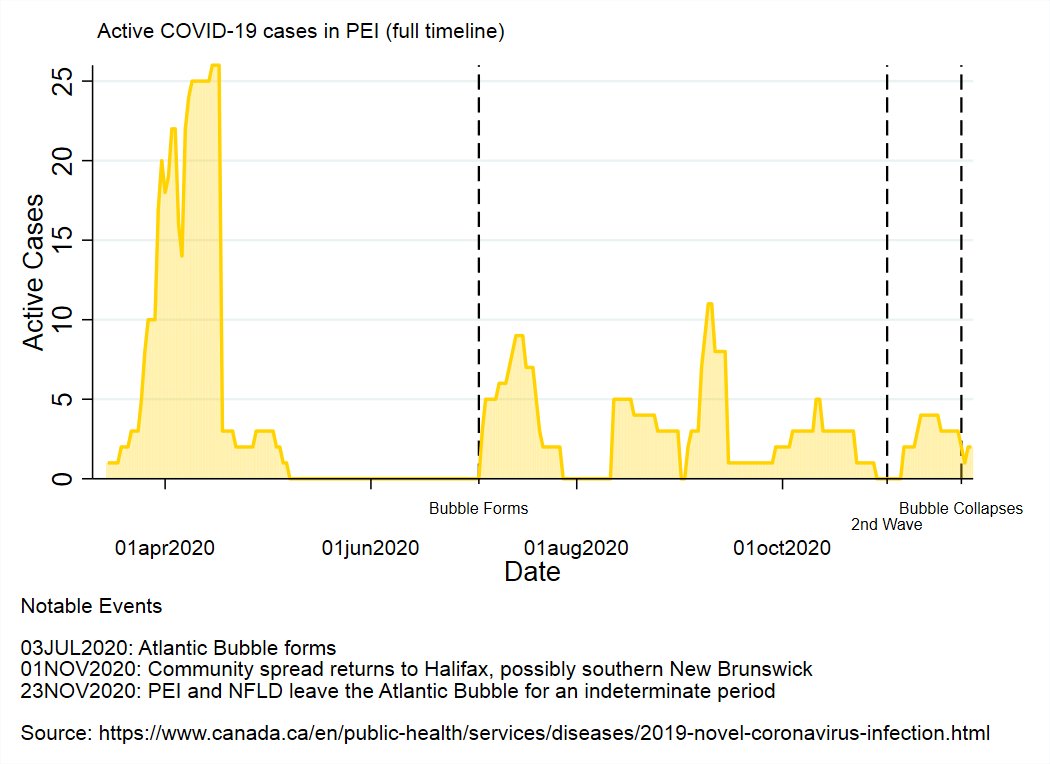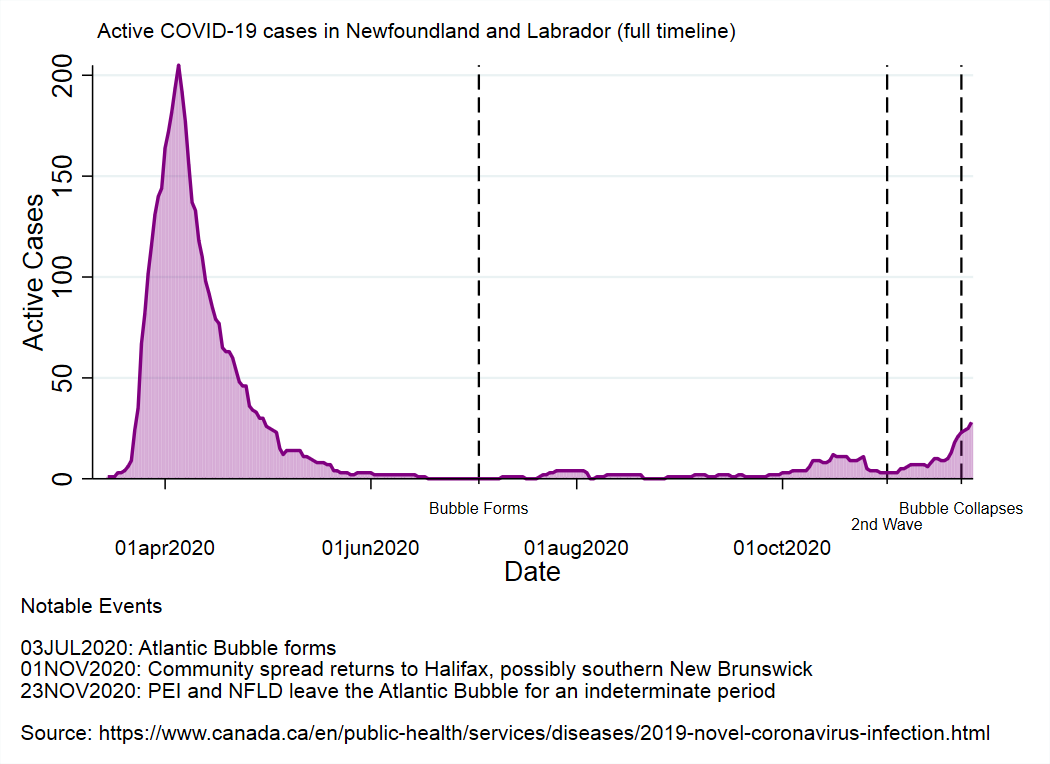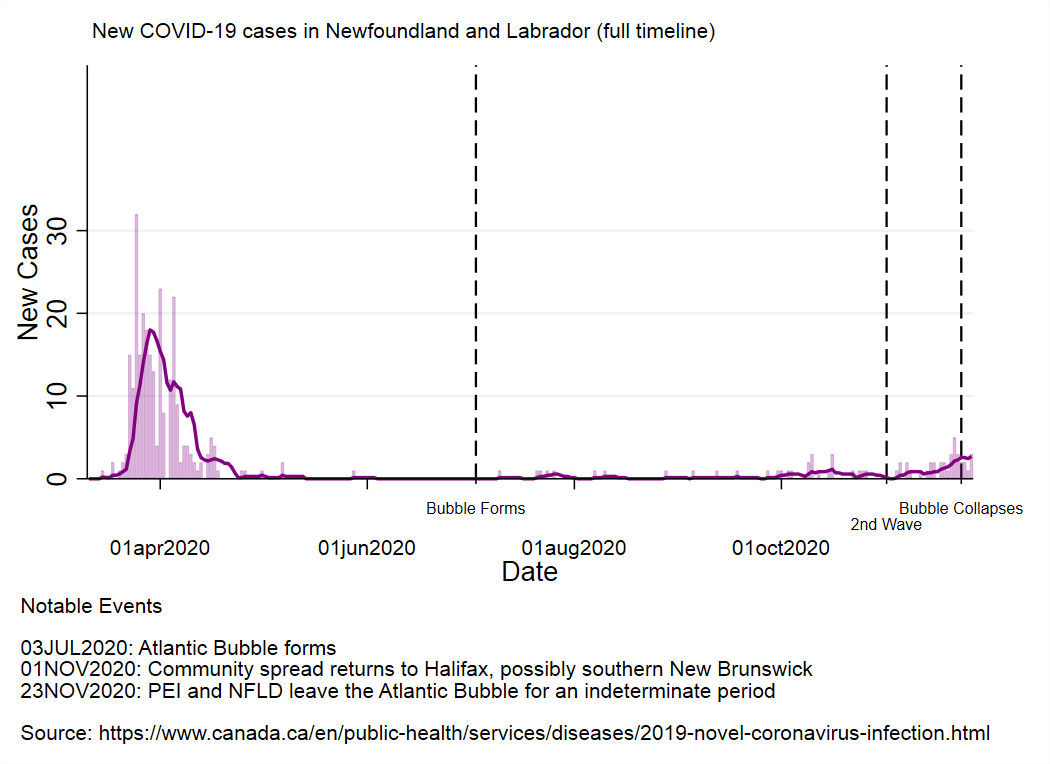
I don't think I have any unique or particularly interesting thoughts, but here they are.
The Atlantic region has benefited from receiving a good hand at the start of the pandemic and playing that hand mostly pretty well.
The Atlantic region has benefited from receiving a good hand at the start of the pandemic and playing that hand mostly pretty well.
https://twitter.com/RonaldNHughes/status/1332439852613206018
Early on, the Atlantic region didn't have quite as many cases per capita as other parts of the country.
With our smaller, more rural population, than means we were closer to zero cases than almost anywhere in the country.
With our smaller, more rural population, than means we were closer to zero cases than almost anywhere in the country.

So, good starting position. We went in to the March/April lockdowns with about as many cases as other provinces had at their lowest points in the pandemic so far.
But it's totally possible to lose that advantage!
Look at the Prairies. For awhile in the summer it looked like they were weeks away from getting to zero cases. Now Manitoba has the highest per capita case numbers and has a month.
Look at the Prairies. For awhile in the summer it looked like they were weeks away from getting to zero cases. Now Manitoba has the highest per capita case numbers and has a month.
So, we got to zero relatively early on in the pandemic, although it's impossible to know when for sure. Maybe June.
Zero is special. You can't grow from zero. You have to import a case and then grow that. And theoretically, you can just not import cases.
Zero is special. You can't grow from zero. You have to import a case and then grow that. And theoretically, you can just not import cases.
In practice, it's a little trickier than that, though. All through the pandemic, people are still coming and going via various exemptions.
These all make total sense on paper, and are absolutely ways the virus can get in.
These all make total sense on paper, and are absolutely ways the virus can get in.
There's also enforcement. We don't have central quarantine. You just isolate somewhere (informing the host government where), and they make check-in calls. Detected non-compliance will be fined, but it's partially an honour system. Travelers are not under constant surveillance.
But still,the biggest success was getting to zero and then not importing any cases.
This is way easier when the country is generating ~300cases per day (July) then when it's generating 5000 (today).
This is way easier when the country is generating ~300cases per day (July) then when it's generating 5000 (today).
The more cases there are, the more likely a traveler is to be infected and the more likely it is that one of your perfectly fine exemptions will bite you in the ass.
As a region, we were slow to tighten restrictions on travelers when the rest of the country entered the 2nd wave.
As a region, we were slow to tighten restrictions on travelers when the rest of the country entered the 2nd wave.
Depending on which Bubble province you were in, travelers with exemptions had modified isolation requirements, and their families/housemates didn't have to isolate with them.
But it's a mistake that basically all provinces made.
But it's a mistake that basically all provinces made.
Probably the biggest difference I've seen in the Atlantic Bubble is responsiveness to case numbers. I've joked in my daily reports that the correct number of cases to have is zero.
Well, it is!
Well, it is!
If you haven't had any community transmission for 6 months, having a case not linked to travel or a known case should absolutely raise alarm bells. Having 10 cases instead of one should raise alarm bells. Seeing continual case growth should raise alarm bells.
NS is generating 15 cases/million on average this week. Bars, restaurants and gyms are closed in Halifax (the only affected area so far) and travel to the area is discouraged.
Same thing to a lesser degree in NB. Cases go up a bit and if they ever feel like they're losing control of it, they start to clamp down.
BC has 10x the cases per capita as NS, but I think restaurants are still open. (confirm?).
We're hyper-reactive to changing circumstances.
We're hyper-reactive to changing circumstances.
I guess to sum-up, here are the main differences that made the Atlantic Bubble work (and why *actually* it still does):
1) Good luck in initial case numbers and getting the whole region to zero.
2) Good (not perfect) policies that prevented re-seeding of cases for ~6 months.
1) Good luck in initial case numbers and getting the whole region to zero.
2) Good (not perfect) policies that prevented re-seeding of cases for ~6 months.
3) A population that is generally willing to go comply with public health measures at high levels. If a rule makes sense for a good goal, we'll basically all just do it. At least for awhile.
4) A population that is hyper-reactive to changing case numbers. Half the bars and restaurants in the city had already closed voluntarily before the new policy even came though. Partly due to altruism but partly because no one was going anyways.
5) And lastly: hyper-responsive politicians and public health leaders. Basically none of them in them in the Atlantic region have a wait and see approach to the pandemic.
TLDR: We had some natural advantages and made good choices early on that spun up into a virtuous cycle.
My one last tangential point is that is that some people are crowing that the 'Bubble has popped'. This is narrowly true, but misses the bigger point.
The Atlantic Bubble existed to allow the people here to visit and do business with one another while keeping the virus out.
The Atlantic Bubble existed to allow the people here to visit and do business with one another while keeping the virus out.
So what happens when there's a breach in the Bubble?
It doesn't pop. We haven't started accepting travelers from outside the region and declared 'oh well!'
We're cauterizing the affected areas, forming smaller provincial bubbles with the hope of linking back up.
It doesn't pop. We haven't started accepting travelers from outside the region and declared 'oh well!'
We're cauterizing the affected areas, forming smaller provincial bubbles with the hope of linking back up.
• • •
Missing some Tweet in this thread? You can try to
force a refresh






